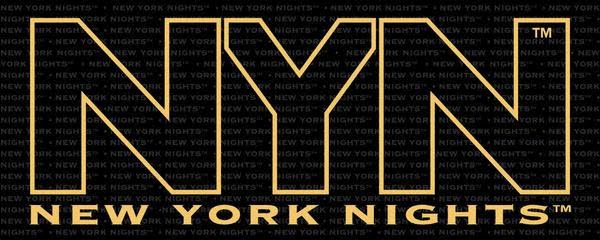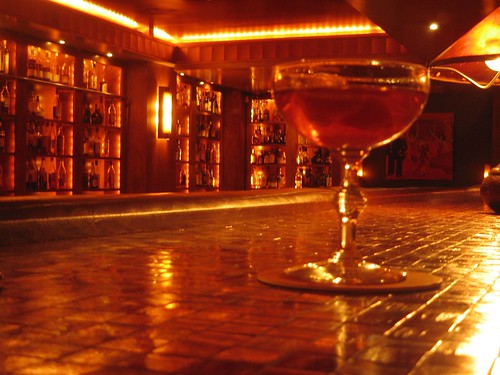
By Gamal Hennessy
The laws that a society adopts are a reflection of the economic, social and moral standards of the time. In theory, as society changes and evolves, so do the laws. Unfortunately there is often a lag between social standards and legal standards. The laws and regulations that apply to nightlife are a prime example of this situation, since many of the modern laws have their roots in Prohibition. One of the most basic sacred cows that needs to be questioned is the so called 200 foot rule because it is often being used to suppress the industry not protect the community.
What is the 200 Foot Rule?
The New York State Liquor Authority (SLA) decides who can legally sell alcohol and the circumstances of that sale. The SLA follows a set of laws called the Alcohol Beverage Control Law (ABC). Section 64(d)(8) of the ABC prohibits bars, clubs and lounges from operating within 200 feet of a school, church or other place of worship on the same street.
Why Was the Law Put in Place?
While it might seem like common sense to put some distance between nightlife venues and places of worship, the origin of the law needs to be considered. The 200 foot rule is a product of a very specific period in US history that was by and large anti liquor. Even after the end of Prohibition there was a feeling that children and church going people should not be exposed to the evils of drinking. Creating distance between a church and a bar seemed to serve this purpose.
Why Do We Need This Law Now?
But New York in 2010 is not the same place that it was in 1933. Today, the idea that separating schools and churches from bars somehow protects the moral fiber of classrooms and congregations is laughable. Even if all three establishments were opened at the same time (they generally are not) there is no evidence that church goers would simply skip services and belly up to the bar, or that packs of drunken patrons would descend upon a Sunday school class to cause mayhem and destruction. Even if bars were pure dens of inequity and churches were total bastions of purity (which also isn’t true) there is no reason to believe that separating bars from religious buildings serves the public interest. Even if all the bars and all the churches were separated by 200 miles, good little students and pious church goers could still see the negative effects of drinking on any television channel, any movie screen, all over the internet and in their own homes.
If the 200 foot rule cannot achieve its goal of shielding a vulnerable group from dangerous exposure, then why do we need it? Why are we trying to limit an industry based on the social norms of pre-World War II America? New York nightlife brings business and cultural benefits to the city. A healthy and vibrant nightlife benefits property values, tourism, the economy and the social life of everyone in New York. Why try to hamstring such a vital part of the city?
How is the Law Being Used Now?
There are those that contend that the 200 foot rule is not a defense mechanism for congregations and students. They feel that it is NIMBY weapon to limit the nightlife industry. Case in point; State Senator Daniel Squadron recently had to 200 foot rule modified with a minute technical point. Instead of measuring the 200 feet mentioned in the law from the edge of any school or church, Mr. Squadron pushed to have the 200 feet measurement start at the door of the church. While this is a small modification, the results could be significant when you consider that a door might be 15-20 feet away from the edge of the building, effectively making the 200 foot law into a 180 foot law. This small change might seem trivial until you consider how dense New York City is. Then when you consider how many different types of churches, mosques, synagogues, storefront churches, schools, day care centers and other similar institutions exist in the city, especially in certain neighborhoods, you begin to understand that the change in the law is a noose that could cut off the air to New York’s nightlife industry.
What are the Alternatives to the 200 Foot Rule?
I am not trying to suggest that nightlife venues become as all-pervading in New York as Starbucks, Duane Reade or Chase. I am not endorsing a nightclub on every corner with 24 hour bottle service and music in the streets. I am suggesting that there are methods and solutions to serve the public interest with regards to nightlife that are not based on irrelevant concepts and false morality. Proper zoning by the city can create areas where operators and residents are not constantly at each others throats. Modifications to building codes and thoughtful management of resources can limit the detrimental aspects of nightlife on a community and enhance the positive aspects. Changing the ABC law to reflect what New York is instead of what New York was can improve things for residents, patrons and operators alike. Hiding behind a outdated law might be politically expedient, but it does not serve the public interest.
Please keep in mind that neither the New York Nightlife Association nor operators in general have not endorsed this idea. They have more practical concerns to deal with on a day to day basis and more political intelligence than I do. They don’t want to make their relations with the CBs any worse than it already is. NYN can raise these issues and at least introduce them for debate because we believe that debates on topics like this are useful if they can help revive the business and culture of New York nightlife.
Have fun.
The laws that a society adopts are a reflection of the economic, social and moral standards of the time. In theory, as society changes and evolves, so do the laws. Unfortunately there is often a lag between social standards and legal standards. The laws and regulations that apply to nightlife are a prime example of this situation, since many of the modern laws have their roots in Prohibition. One of the most basic sacred cows that needs to be questioned is the so called 200 foot rule because it is often being used to suppress the industry not protect the community.
What is the 200 Foot Rule?
The New York State Liquor Authority (SLA) decides who can legally sell alcohol and the circumstances of that sale. The SLA follows a set of laws called the Alcohol Beverage Control Law (ABC). Section 64(d)(8) of the ABC prohibits bars, clubs and lounges from operating within 200 feet of a school, church or other place of worship on the same street.
Why Was the Law Put in Place?
While it might seem like common sense to put some distance between nightlife venues and places of worship, the origin of the law needs to be considered. The 200 foot rule is a product of a very specific period in US history that was by and large anti liquor. Even after the end of Prohibition there was a feeling that children and church going people should not be exposed to the evils of drinking. Creating distance between a church and a bar seemed to serve this purpose.
Why Do We Need This Law Now?
But New York in 2010 is not the same place that it was in 1933. Today, the idea that separating schools and churches from bars somehow protects the moral fiber of classrooms and congregations is laughable. Even if all three establishments were opened at the same time (they generally are not) there is no evidence that church goers would simply skip services and belly up to the bar, or that packs of drunken patrons would descend upon a Sunday school class to cause mayhem and destruction. Even if bars were pure dens of inequity and churches were total bastions of purity (which also isn’t true) there is no reason to believe that separating bars from religious buildings serves the public interest. Even if all the bars and all the churches were separated by 200 miles, good little students and pious church goers could still see the negative effects of drinking on any television channel, any movie screen, all over the internet and in their own homes.
If the 200 foot rule cannot achieve its goal of shielding a vulnerable group from dangerous exposure, then why do we need it? Why are we trying to limit an industry based on the social norms of pre-World War II America? New York nightlife brings business and cultural benefits to the city. A healthy and vibrant nightlife benefits property values, tourism, the economy and the social life of everyone in New York. Why try to hamstring such a vital part of the city?
How is the Law Being Used Now?
There are those that contend that the 200 foot rule is not a defense mechanism for congregations and students. They feel that it is NIMBY weapon to limit the nightlife industry. Case in point; State Senator Daniel Squadron recently had to 200 foot rule modified with a minute technical point. Instead of measuring the 200 feet mentioned in the law from the edge of any school or church, Mr. Squadron pushed to have the 200 feet measurement start at the door of the church. While this is a small modification, the results could be significant when you consider that a door might be 15-20 feet away from the edge of the building, effectively making the 200 foot law into a 180 foot law. This small change might seem trivial until you consider how dense New York City is. Then when you consider how many different types of churches, mosques, synagogues, storefront churches, schools, day care centers and other similar institutions exist in the city, especially in certain neighborhoods, you begin to understand that the change in the law is a noose that could cut off the air to New York’s nightlife industry.
What are the Alternatives to the 200 Foot Rule?
I am not trying to suggest that nightlife venues become as all-pervading in New York as Starbucks, Duane Reade or Chase. I am not endorsing a nightclub on every corner with 24 hour bottle service and music in the streets. I am suggesting that there are methods and solutions to serve the public interest with regards to nightlife that are not based on irrelevant concepts and false morality. Proper zoning by the city can create areas where operators and residents are not constantly at each others throats. Modifications to building codes and thoughtful management of resources can limit the detrimental aspects of nightlife on a community and enhance the positive aspects. Changing the ABC law to reflect what New York is instead of what New York was can improve things for residents, patrons and operators alike. Hiding behind a outdated law might be politically expedient, but it does not serve the public interest.
Please keep in mind that neither the New York Nightlife Association nor operators in general have not endorsed this idea. They have more practical concerns to deal with on a day to day basis and more political intelligence than I do. They don’t want to make their relations with the CBs any worse than it already is. NYN can raise these issues and at least introduce them for debate because we believe that debates on topics like this are useful if they can help revive the business and culture of New York nightlife.
Have fun.




